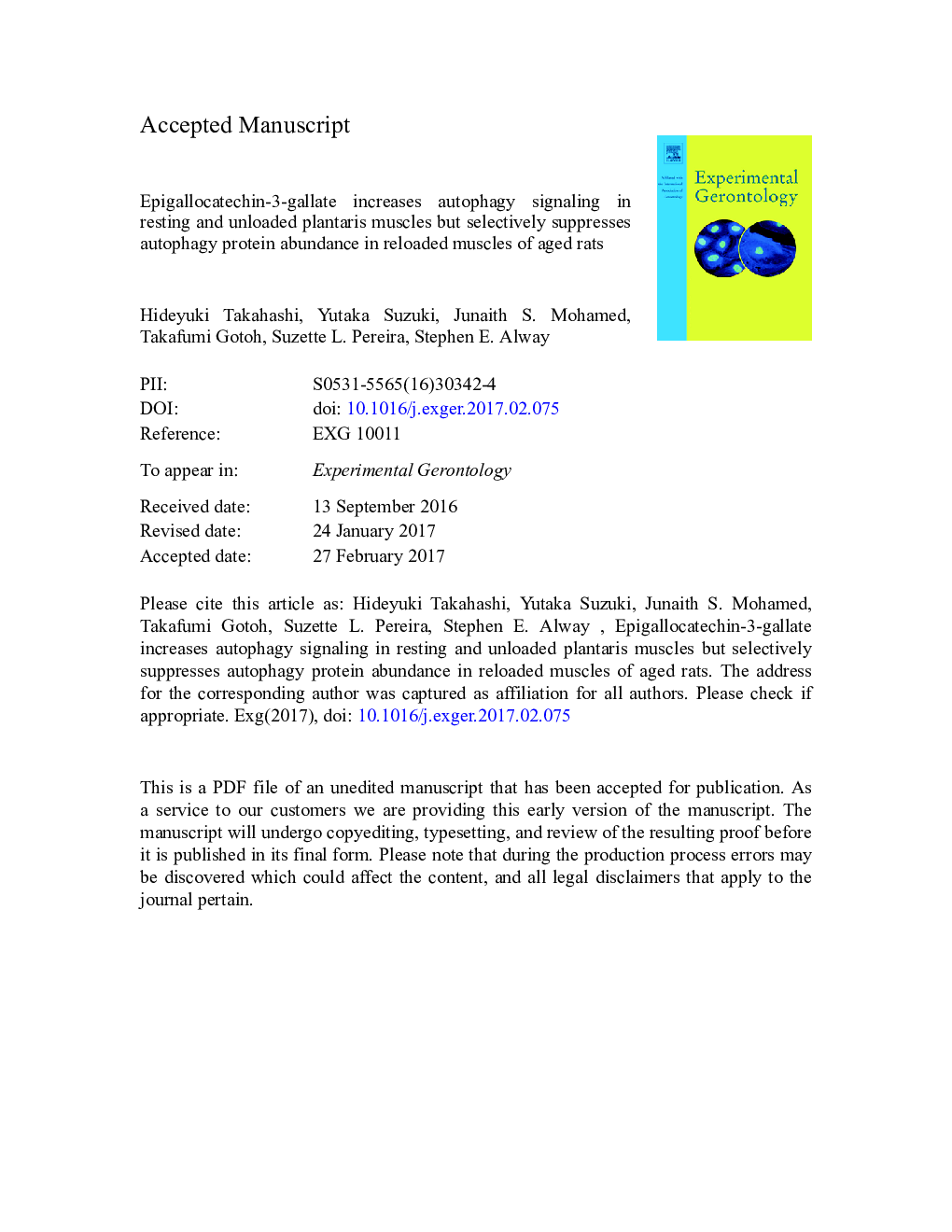| کد مقاله | کد نشریه | سال انتشار | مقاله انگلیسی | نسخه تمام متن |
|---|---|---|---|---|
| 5501567 | 1534850 | 2017 | 47 صفحه PDF | دانلود رایگان |
عنوان انگلیسی مقاله ISI
Epigallocatechin-3-gallate increases autophagy signaling in resting and unloaded plantaris muscles but selectively suppresses autophagy protein abundance in reloaded muscles of aged rats
دانلود مقاله + سفارش ترجمه
دانلود مقاله ISI انگلیسی
رایگان برای ایرانیان
کلمات کلیدی
httBCL2-like 1TNFIRGMPI3KγDAPK1huntingtin geneMuRF1CDKN2AIFNγBeclin1Sirt1Bcl-xLFADDPGC-1αLC3ATGMnSODBcl-2EGCGperoxisome proliferator-activated receptor gamma coactivator 1-alpha - 1-آلفا کوآتیواتور گاما گیرنده فعال پرولیسینز فعالROS - ROSAutophagy - اتوفاژیepigallocatechin gallate - اپی گالوستاچین گالاتBak1 - بک 1Nutrition - تغذیهtumor necrosis factor-α - تومور نکروز عامل αmicrotubule-associated protein light chain 3 - زنجیره سبک پروتئینی مرتبط با میکروتوبول 3Aging - سالخوردگیMuscle wasting - عضله هدر رفتنtumor necrosis factor - فاکتور نکروز تومورTNF-α - فاکتور نکروز توموری آلفاB-cell lymphoma 2 - لنفوم سلول B 2Silent mating type information regulation 2 homolog 1 - مقررات اطلاعات نوع جفت گیری خاموش 2 homolog 1cyclin-dependent kinase inhibitor 2A - مهارکننده 2A کیناز وابسته به سیکلینmicrotubule-associated protein 1 light chain 3 alpha - پروتئین مرتبط با میکروتوبول 1 زنجیره سبک 3 آلفاPim-2 - پیم 2autophagy-related gene - ژن مربوط به autophagyInterferon gamma - گاما اینترفرونReactive oxygen species - گونههای فعال اکسیژن
موضوعات مرتبط
علوم زیستی و بیوفناوری
بیوشیمی، ژنتیک و زیست شناسی مولکولی
سالمندی
پیش نمایش صفحه اول مقاله

چکیده انگلیسی
We have previously found that Epigallocatechin-3-gallate (EGCg), an abundant catechin in green tea, reduced apoptotic signaling and improved muscle recovery in response to reloading after hindlimb suspension (HS). In this study, we investigated if EGCg altered autophagy signaling in skeletal muscle of old rats in response to HS or reloading after HS. Fischer 344 Ã Brown Norway inbred rats (age 34 months) were given 1 ml/day of purified EGCg (50 mg/kg body weight), or the same sample volume of the vehicle by gavage. One group of animals received HS for 14 days and the second group of rats received 14 days of HS, then the HS was removed and they were allowed to recover by ambulating normally around the cage for two weeks. EGCg decreased a small number of autophagy genes in control muscles, but it increased the expression of other autophagy genes (e.g., ATG16L2, SNCA, TM9SF1, Pink1, PIM-2) and HS did not attenuate these increases. HS increased Beclin1, ATG7 and LC3-II/I protein abundance in hindlimb muscles. Relative to vehicle treatment, EGCg treatment had greater ATG12 protein abundance (35.8%, P < 0.05), but decreased Beclin1 protein levels (â 101.1%, P < 0.05) after HS. However, in reloaded muscles, EGCg suppressed Beclin1 and LC3-II/I protein abundance as compared to vehicle treated muscles. EGCg appeared to “prime” autophagy signaling before and enhance autophagy gene expression and protein levels during unloading in muscles of aged rats, perhaps to improve the clearance of damaged organelles. However, EGCg suppressed autophagy signaling after reloading, potentially to increase the recovery of hindlimb muscles mass and function after loading is restored.
ناشر
Database: Elsevier - ScienceDirect (ساینس دایرکت)
Journal: Experimental Gerontology - Volume 92, June 2017, Pages 56-66
Journal: Experimental Gerontology - Volume 92, June 2017, Pages 56-66
نویسندگان
Hideyuki Takahashi, Yutaka Suzuki, Junaith S. Mohamed, Takafumi Gotoh, Suzette L. Pereira, Stephen E. Alway,